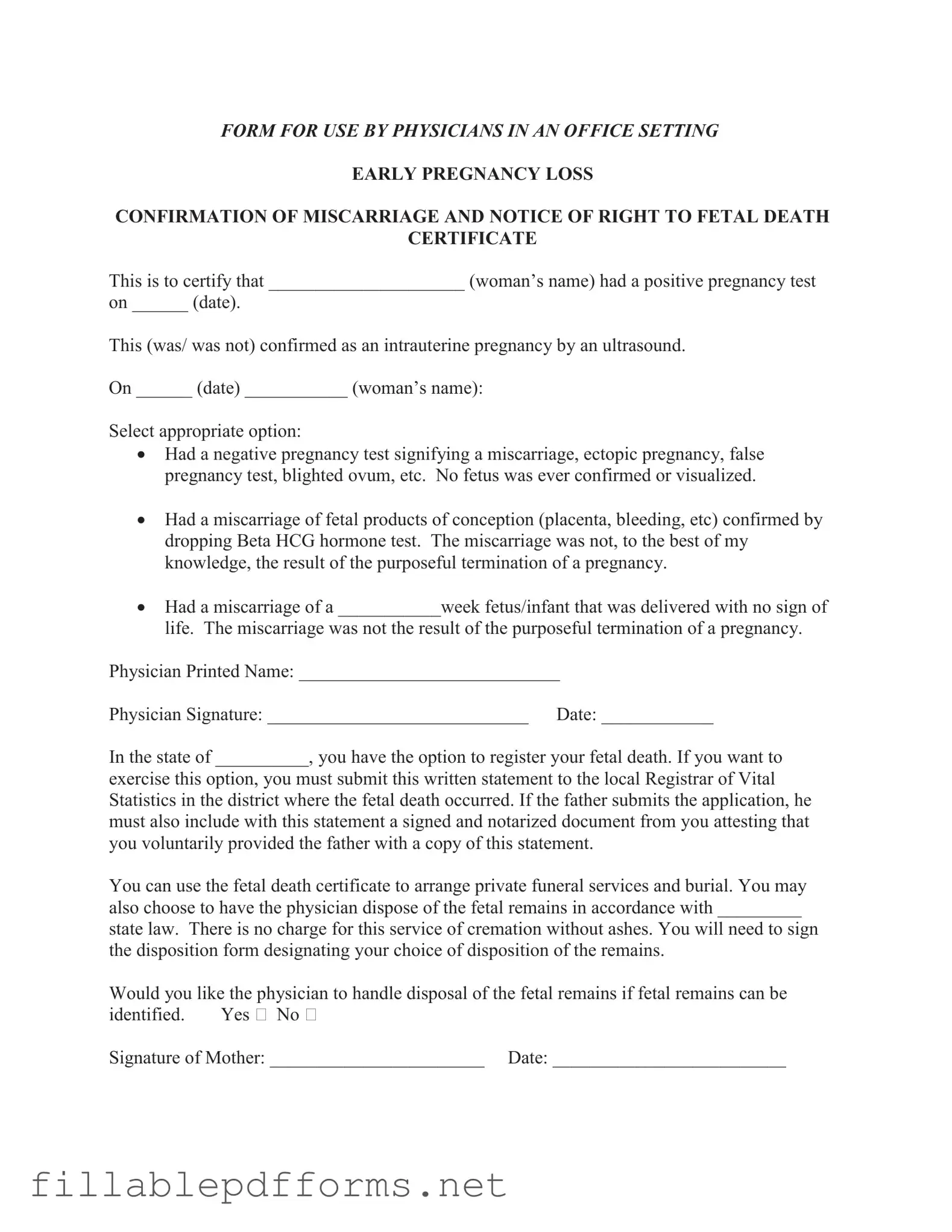Experiencing a miscarriage can be one of the most heartbreaking events in a person's life. During such a difficult time, the Miscarriage Discharge Paper form plays a crucial role in documenting the medical aspects of the loss. This form is utilized by physicians in an office setting to confirm early pregnancy loss and to provide essential information regarding the right to a fetal death certificate. It begins by certifying the woman's positive pregnancy test and noting whether an ultrasound confirmed an intrauterine pregnancy. The physician then indicates the nature of the miscarriage, whether it involved a negative pregnancy test, a confirmed miscarriage, or the delivery of a fetus without signs of life. Additionally, the form outlines the option for parents to register the fetal death with local authorities, allowing them to arrange for private funeral services or burial. Understanding this form is vital, as it not only serves as a record of the medical event but also guides parents through their choices for the respectful handling of remains, ensuring they feel supported during this challenging time.
